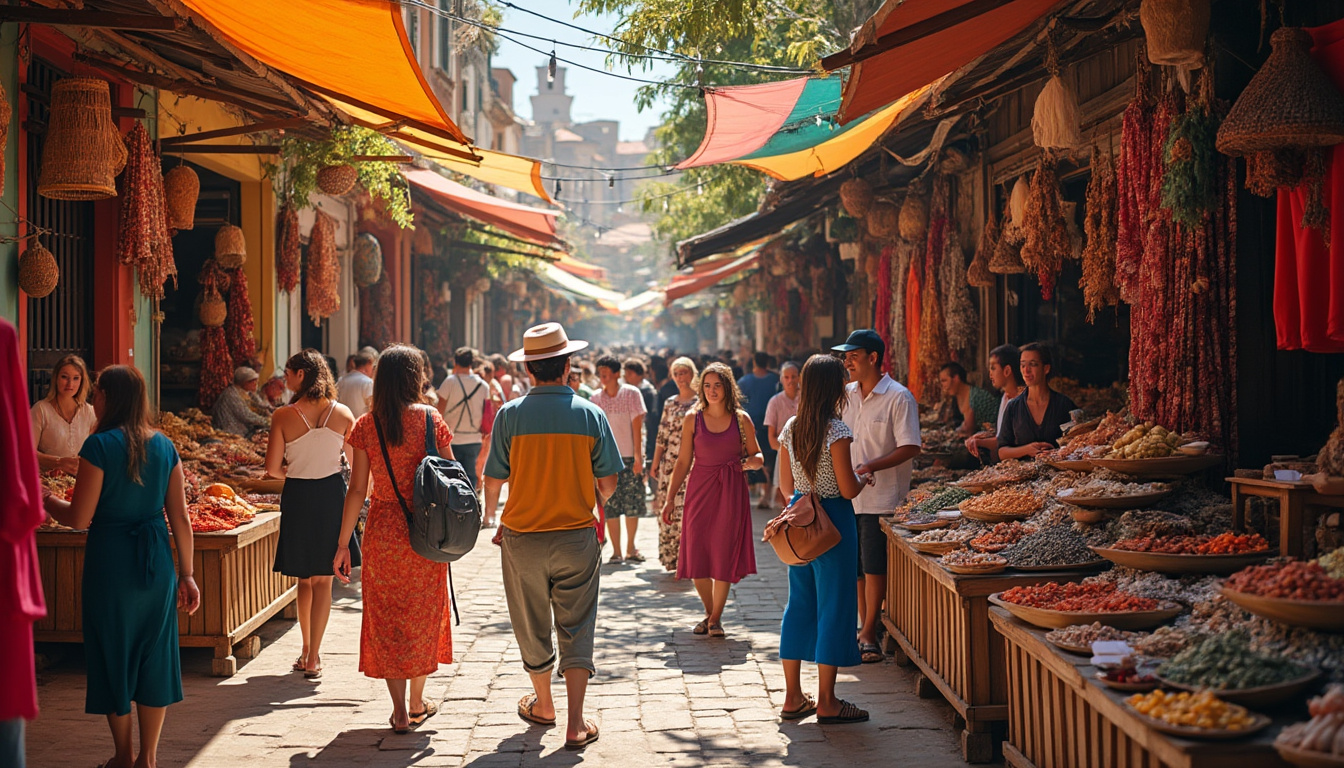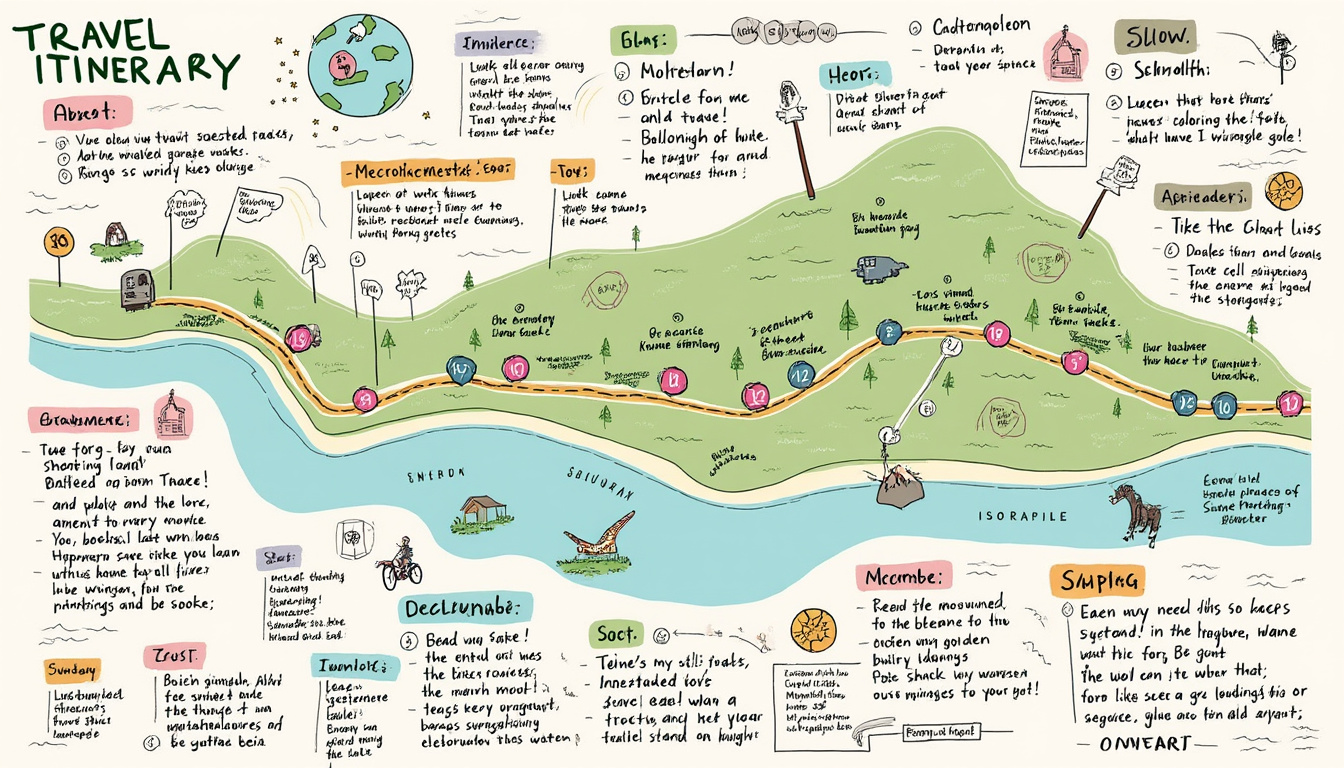In an era dominated by rapid schedules and crowded itineraries, the art of traveling slowly is reshaping how adventurers connect with the world. Slow travel practices invite explorers to shed the frantic pace, allowing moments to breathe and deepening their bonds with destinations and locals alike. This approach goes beyond sight-seeing, emphasizing genuine cultural immersion, sustainable choices, and a mindful rhythm that nurtures the mind and spirit. With growing interest from communities such as the Slow Travel Network and initiatives like The Conscious Travel Collective, travelers now have the opportunity to craft experiences that honor the essence of each place rather than rushing through it. Gentle Roamers and Pace Yourself Travels have popularized this unhurried philosophy, proving that meaningful journeys are often found not in the distance covered but in the depth explored. As more seek to savor rather than speed through their trips, slow travel ushers in a conscious shift toward responsible, enriching adventures, weaving memories that linger far beyond the journey itself.
Immersing Deeply: How Slow Travel Enriches Cultural Experiences in 2025
Slow travel creates a transformative opportunity for travelers to engage intimately with local cultures, moving beyond superficial encounters to build authentic connections. The key principle here is to prioritize time over quantity; instead of skimming a checklist of attractions, extended stays in diverse neighborhoods breathe life into a traveler’s experience.
Mastering basics of the local language—even simple greetings or common phrases—opens doors to meaningful dialogues and enriches cultural appreciation. Language acts as the bridge for engaging with residents, offering insights into traditions that would otherwise remain hidden. Choosing accommodations that align with this ethos, such as locally-owned guesthouses or homestays, embeds visitors within the fabric of everyday life, allowing a closer look at traditions, family routines, and community dynamics.
- Learning local customs: Participating in village festivals, markets, or workshops highlights cultural nuances.
- Engaging artisans: Visiting workshops to understand handcrafted goods supports the local economy and deepens cultural knowledge.
- Seeking offbeat paths: Exploring rural or suburban areas presents preserved traditions and architectural gems, avoiding crowded urban centers.
- Enjoying indigenous cuisine: Sampling street food and dining in humble local eateries fosters cultural connection through flavors.
For example, a traveler visiting Sedona, Arizona, as featured by Leisurely Trails Adventures, can spend days hiking stunning rock formations and joining community wellness workshops, a sharp contrast to a typical whirlwind tour. This type of engagement allows for a genuine embrace of a place’s spirit.
| Slow Travel Cultural Engagements | Benefits |
|---|---|
| Local Language Practice | Increased communication and cultural access |
| Community-Based Accommodations | Authentic lifestyle exposure and sustainable tourism |
| Participation in Local Events | Cultural immersion and unique experiential learning |
| Exploration of Hidden Gems | Less crowded, authentic experiences |
| Indigenous Culinary Experiences | Connection through food and social interaction |
By adopting such approaches, travelers embody the ideals promoted by SlowLane Experiences and Savor the Journey Co., fostering respect and understanding between visitors and host communities. These methods are core to shaping travel into a meaningful, soulful practice rather than a mere checklist of destinations.

Making space for spontaneity and flexible itineraries
Flexibility remains essential in the slow travel mindset. Rather than adhering to rigid schedules, allowing days to unfold organically leads to unexpected discoveries, whether that’s joining a neighborhood dance, uncovering an unmarked local café, or simply enjoying a sunset with newfound friends. This openness nurtures authentic experiences that often define memorable journeys.
Sustainable Slow Travel Practices for Conscious Explorers
The tenets of sustainability have become inseparable from the slow travel movement, especially as tourists and communities alike recognize the need to minimize ecological footprints and elevate local economies. Taking a mindful approach translates into deliberate choices that favor conservation and cultural preservation.
- Eco-friendly accommodations: Staying at certified green lodgings ensures energy efficiency and supports local heritage conservation.
- Low-impact transportation: Opting for public transit, cycling, or walking reduces carbon emissions while encouraging closer engagement with surroundings.
- Supporting local artisans and businesses: Purchasing handcrafted goods and eating at family-owned restaurants strengthen community livelihoods.
- Waste reduction: Carrying reusable containers and proper disposal methods combat pollution and protect fragile ecosystems.
- Involvement in conservation: Participating in eco-tours or cultural heritage workshops contributes actively to destination preservation.
Choosing travel seasons mindfully can alleviate pressure on popular destinations, aligning with recommendations seen in sustainable slow travel guides. Off-peak visits encourage a slower pace, more relaxed environments, and opportunities for genuine connections away from tourist crowds. Meanwhile, companies such as Mindful Miles Tours develop journeys emphasizing environmental respect and cultural integrity, championing immersive experiences that leave positive legacies.
| Sustainable Practice | Impact |
|---|---|
| Eco-friendly Lodging | Conserves resources; enriches local economy |
| Alternative Transport | Reduces emissions; fosters local interaction |
| Local Business Support | Enhances cultural preservation and economy |
| Waste Minimization | Protects ecosystems; lowers pollution |
| Community Conservation Engagement | Encourages sustainable legacy preserving |
For those embracing sustainability alongside slow traveling, the collaboration between The Conscious Travel Collective and Globetrot Calmly offers insight into aligning travel ethics with enriching adventures. Such mindful approaches align closely with current global trends and will become even more vital as tourism adapts to future challenges (slow travel future tourism).
Mindful Itinerary Planning: How to Design Your Slow Travel Adventure
Crafting a slow travel itinerary emphasizes mindfulness and flexibility. Unlike packed schedules aimed at ticking boxes, these plans nurture calm, authentic engagement with each locale. Prioritizing quality engagements over quantity leads to deeper satisfaction during trips and opens room for spontaneous moments.
Some essential tips to integrate into itinerary construction include:
- Focus on fewer destinations: Opt for extended stays in carefully chosen locations that align with personal interests.
- Research local events: Incorporate festivals, market days, or cultural gatherings to enhance immersion.
- Choose experiential lodgings: Homestays, boutique hotels, or guesthouses with cultural significance build a sense of belonging.
- Leave time for unplanned activities: Resist overbooking; allow days for relaxed explorations and serendipitous encounters.
- Utilize slow transport options: Trains, bicycles or local buses facilitate scenic travel and reduce environmental impact.
These principles are championed by groups like Slow Travel Network and platforms such as Ultimate Slow Travel Guide and Mindful Wellness Traveler’s Slow Travel Guide, which provide resources and real-life examples on thoughtfully designing journeys.

| Key Elements for Slow Travel Itinerary | Why It Matters |
|---|---|
| Extended Stays | Allow deeper cultural engagement and rest |
| Local Events Inclusion | Fosters authentic cultural encounters |
| Culturally Rich Lodging | Strengthens sense of belonging |
| Flexible Scheduling | Adapts to serendipity and traveller interest |
| Sustainable Transports | Enhances environmental responsibility |
The Benefits of Adopting a Slow Travel Lifestyle
Adopting slow travel techniques offers multiple advantages that extend beyond the trip itself, affecting long-term well-being and worldview. Key benefits include:
- Reduced stress: A measured pace allows for rest and absorption, avoiding the fatigue tied to rushed schedules.
- Health improvements: Walking, cycling, and outdoor activities included in slow travel promote physical and mental wellness (serenity-trips.com reports).
- Deeper cultural understanding: Taking time to engage with locals fosters empathy and enriches travel memories.
- Personal growth: Exposure to new customs and environments builds flexibility and confidence.
- Cost savings: Avoiding luxury accommodations and frequent transits lessens expenses while enhancing experience authenticity.
Such benefits have spurred a growing interest in slow travel, with some markets experiencing annual increases upwards of 10% as noted by The Conscious Travel Collective. Communities including Gentle Roamers and Leisurely Trails Adventures facilitate platforms where travelers share stories that illustrate this enriching lifestyle choice.
| Benefit | Impact on Travel Experience |
|---|---|
| Stress Reduction | Improved relaxation and trip satisfaction |
| Well-being | Physical fitness and mental clarity gains |
| Cultural Engagement | Enhanced empathy and meaningful relationships |
| Personal Development | Increased adaptability and self-confidence |
| Financial Savings | Cost-effectiveness and resource-conscious travel |
Embracing slow travel transcends mere leisure, evolving into a lifestyle that encourages conscientious exploration and reverence for cultures and landscapes. This philosophy continues to inspire travelers who seek depth over speed in their global escapades.
Tips and Tricks: How to Successfully Practice Slow Travel
Implementing slow travel techniques requires intentional shifts in mindset and preparation. Here are practical strategies to make your journey both enjoyable and soulful:
- Travel with minimal planning: Embrace spontaneity by forgoing rigid schedules and allowing your days to unfold naturally (relaxing slow travel itineraries).
- Choose unique and less touristy destinations: Delve into regions that welcome slower exploration and authentic engagement.
- Live like a local: Dine where residents eat, frequent local markets, and participate in community events.
- Practice sustainability: Opt for eco-friendly transport and lodging to reduce environmental impact.
- Pack light: Travel smart with essentials only, facilitating mobility and lowering carbon footprint.
- Engage with local culture: Research events ahead to incorporate festive and meaningful encounters into your trip.
Balancing structure with freedom allows travelers to cultivate deeper connections while maintaining an open heart to new experiences. Resources from Balance Through Simplicity and Pina Travels offer further inspiration for embracing this enriching style of travel.

As a 34-year-old Yoga Teacher, I am passionate about guiding others on their journey to mindfulness and well-being. With years of experience in various yoga styles, I create a welcoming environment that encourages personal growth and self-discovery. Join me in exploring the transformative power of yoga.


